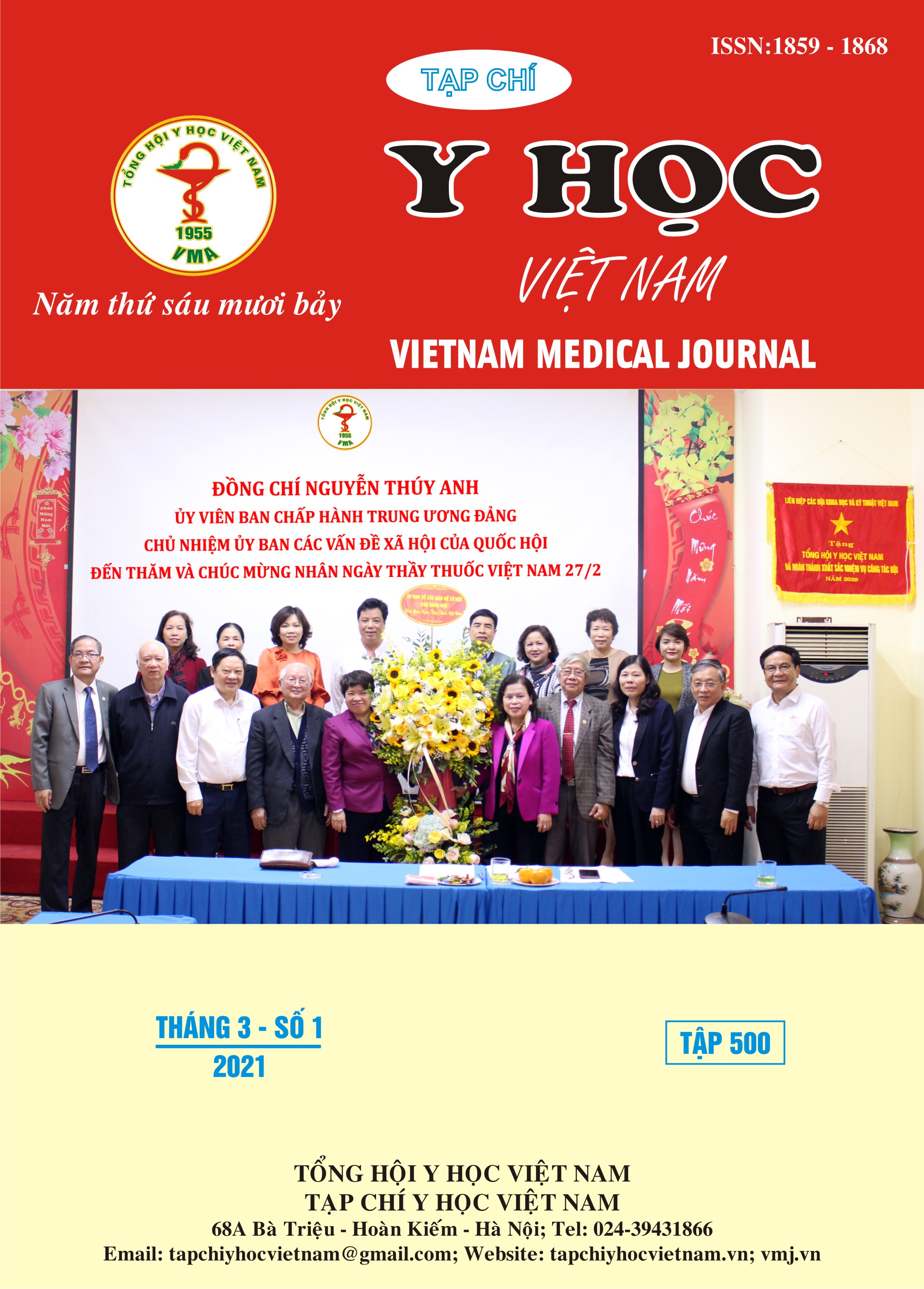ĐẶC ĐIỂM MỘT SỐ YẾU TỐ LIÊN QUAN ĐẾN BỆNH SINH SUY THẬN MẠN TÍNH Ở ĐỐI TƯỢNG GHÉP THẬN
Nội dung chính của bài viết
Tóm tắt
Mục tiêu: Phân tích các yếu tố tiền sử và các yếu tố nguyên nhân dẫn đến suy thận mạn tính và tỉ lệ các giai đoạn của bệnh thận mạn tính trên đối tượng 3 tháng sau ghép thận. Đối tượng và phương pháp nghiên cứu: Gồm 508 bệnh nhân có thời gian sau ghép thận ≥ 3 tháng được theo dõi và điều trị sau ghép tại BV Việt Đức, từ 09/2017 đến 04/2018. Tất cả các bệnh nhân đều tự nguyện tham gia nghiên cứu. Khai thác các thông tin tiền sử các bệnh lý gây ra suy thận mạn. Tiến hành hồi cứu bệnh án phát hiện các yếu tố nguy cơ hoặc là nguyên nhân gây suy thận mạn. Đánh giá phân giai đoạn bệnh thận mạn tính sau ghép theo KDIGO 2012. Kết quả: Nhóm đối tượng có tiền sử tăng huyết áp có tỉ lệ cao nhất chiếm 72,12%. Viêm cầu thận mạn là nguyên nhân suy thận chiếm lỉ lệ cao nhất với 48,23%; Nhóm bệnh nhân ở giai đoạn 2 của phân loại bệnh thận mạn tính chiếm tỉ lệ cao nhất 59,45%. Mức lọc cầu thận trung bình là 70,20 ± 20,10ml/ph chủ yếu tập trung ở bệnh thận mạn tính giai đoạn 1 - 3. Kết luận: Xác định chính xác các yếu tố nguy cơ quyết định lâm sàng sinh học suy thận mạn giúp thiện phân loại và quản lý tốt hơn cho những người mắc bệnh thận mạn tính. Theo dõi đánh giá giai đoạn của bệnh thận mạn tính sau ghép rất quan trọng giúp đưa ra các can thiệp sớm nhằm hạn chế các biến chứng do bệnh thận mạn tính gây ra.
Chi tiết bài viết
Từ khóa
tiền sử, nguyên nhân, giai đoạn bệnh thận mạn tính sau ghép
Tài liệu tham khảo
2. K/DOQI clinical practice guidelines for chronic kidney disease: evaluation, classification, and stratification. Am J Kidney Dis, 2002. 39(2 Suppl 1): p. S1-266.
3. United States Renal Data System Center. 2020; Available from: http://www.usrds.org/ 2002/pres/html/USRDS%202002%20ASN%20Talk%20v8%20files/v3%20document.htm.
4. McMurray, J. and P. Ps, KDIGO Clinical practice Guideline for Anemia in Chronic Kidney Disease. Vol. 2. 2012. 1-335.
5. Sinclair, A.M., et al., Secondary hypertension in a blood pressure clinic. Arch Intern Med, 1987. 147(7): p. 1289-93.
6. Go, A.S., et al., Chronic kidney disease and the risks of death, cardiovascular events, and hospitalization. N Engl J Med, 2004. 351(13): p. 1296-305.
7. Anavekar, N.S., et al., Relation between renal dysfunction and cardiovascular outcomes after myocardial infarction. N Engl J Med, 2004. 351(13): p. 1285-95.
8. Bùi Văn Mạnh, Nghiên cứu lâm sàng, cận lâm sàng và một số chỉ số miễn dịch ở bệnh nhân sau ghép thận, in Nội thận tiết niệu. 2009, Học viện Quân Y.
9. Yu, M.K., et al., Risk factor, age and sex differences in chronic kidney disease prevalence in a diabetic cohort: The Pathways Study. American journal of nephrology, 2012. 36(3): p. 245-251.


